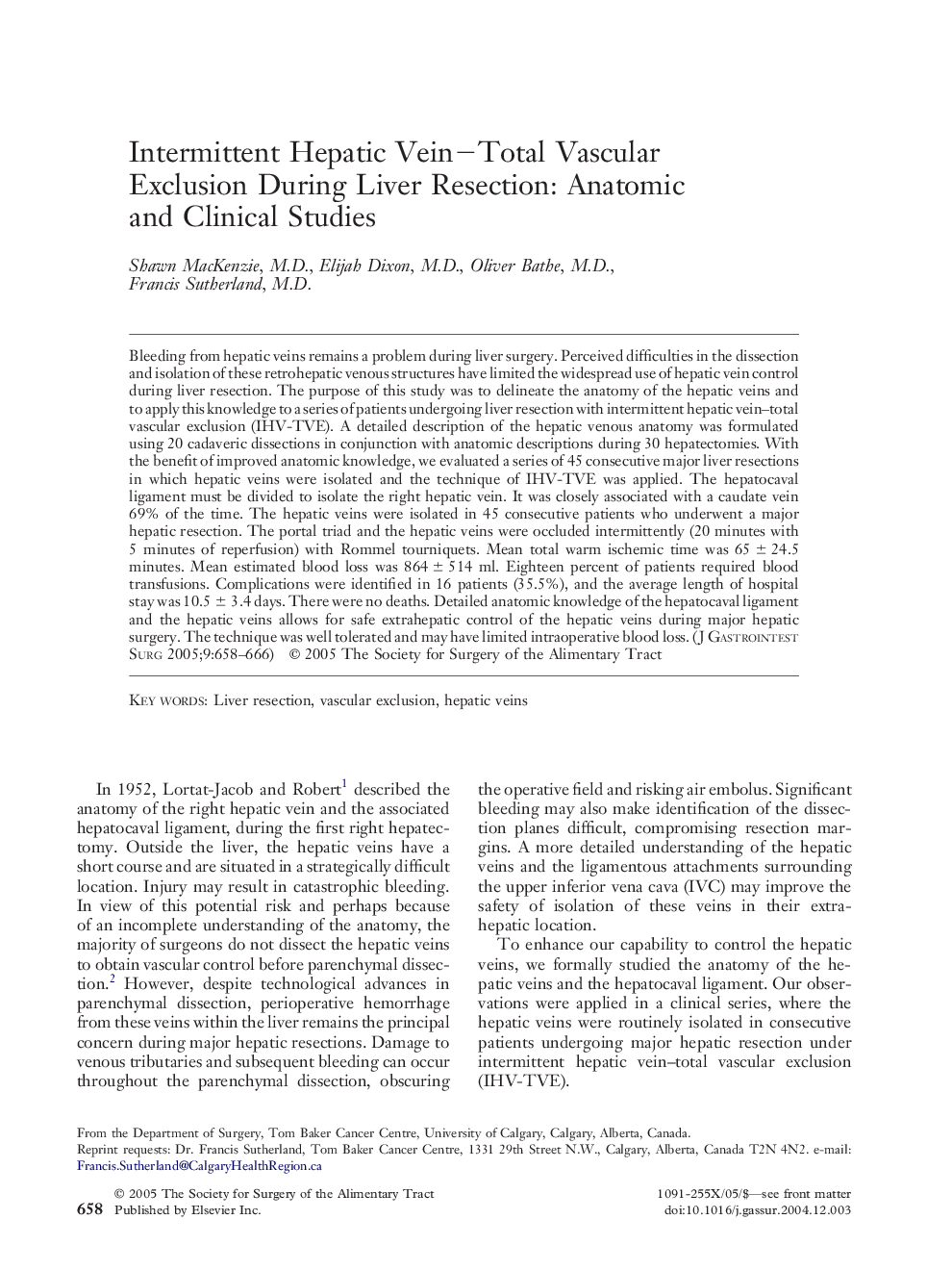| Article ID | Journal | Published Year | Pages | File Type |
|---|---|---|---|---|
| 9401313 | Journal of Gastrointestinal Surgery | 2005 | 9 Pages |
Abstract
Bleeding from hepatic veins remains a problem during liver surgery. Perceived difficulties in the dissection and isolation of these retrohepatic venous structures have limited the widespread use of hepatic vein control during liver resection. The purpose of this study was to delineate the anatomy of the hepatic veins and to apply this knowledge to a series of patients undergoing liver resection with intermittent hepatic vein-total vascular exclusion (IHV-TVE). A detailed description of the hepatic venous anatomy was formulated using 20 cadaveric dissections in conjunction with anatomic descriptions during 30 hepatectomies. With the benefit of improved anatomic knowledge, we evaluated a series of 45 consecutive major liver resections in which hepatic veins were isolated and the technique of IHV-TVE was applied. The hepatocaval ligament must be divided to isolate the right hepatic vein. It was closely associated with a caudate vein 69% of the time. The hepatic veins were isolated in 45 consecutive patients who underwent a major hepatic resection. The portal triad and the hepatic veins were occluded intermittently (20 minutes with 5 minutes of reperfusion) with Rommel tourniquets. Mean total warm ischemic time was 65 ± 24.5 minutes. Mean estimated blood loss was 864 ± 514 ml. Eighteen percent of patients required blood transfusions. Complications were identified in 16 patients (35.5%), and the average length of hospital stay was 10.5 ± 3.4 days. There were no deaths. Detailed anatomic knowledge of the hepatocaval ligament and the hepatic veins allows for safe extrahepatic control of the hepatic veins during major hepatic surgery. The technique was well tolerated and may have limited intraoperative blood loss.
Keywords
Related Topics
Health Sciences
Medicine and Dentistry
Surgery
Authors
Shawn M.D., Elijah M.D., Oliver M.D., Francis M.D.,
